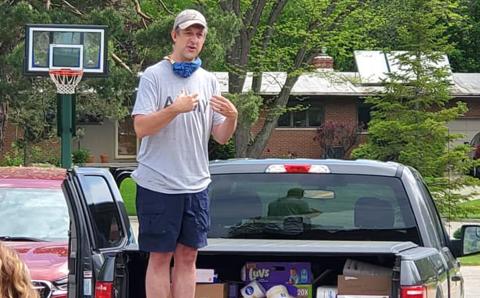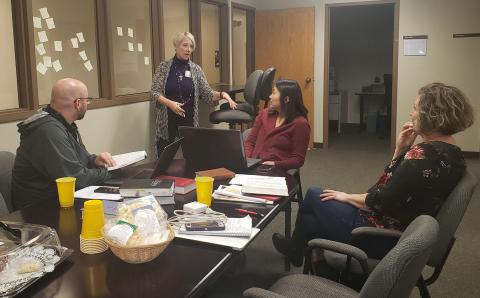A group of engineering students at Dordt University, in Sioux Center, Iowa, worked this year on an update of a wheelchair designed for children. The chair’s original development came from the same department more than 20 years ago. Both editions of the chair were made for Hope Haven, an organization that assists those with physical and mental disabilities and also distributes wheelchairs and other products around the world.
Professor Ben Saarloos led this year’s group of students. The project’s goals were noted in the students’ project summary: “Hope Haven provides low cost and low weight wheelchairs for children in developing countries. Five percent of these children require tilt adjustment not possible with the current design. Our task was to modify Hope Haven’s original design to enable the chair to tilt. Our design needed to use as few new parts as possible; be safe, durable, and operable with one hand; and have modifications cost less than $70 additional.”
The restrictive specifications were not new to Dordt. In the fall of 1996, Hope Haven’s first request to create a chair required that it “not contain any welded parts, could grow with the recipients, offer several layers of built in support for the heads, legs, backs, etc., and would only need one wrench size to adjust or fix in the field,” said Mark Siemonsa, Hope Haven’s director of development.
That year, professor Nolan Van Gaalen, then head of the engineering department, led a group of four seniors to create the “Kid Chair.” Since then, Hope Haven has distributed about 130,000 of the original chairs around the world. When they were looking for improvements—including a removable footrest and a tilting mechanism—Hope Haven came back to Dordt.
Mykaela Ptacek, a senior at Dordt, worked on the tilting mechanism for the chair. “I really liked the missional and service aspects of this project because it gave our project more meaning and impact in that we would be helping others gain mobility,” she said. “I also liked that we would get to design something mechanical ‘from scratch’ and would get to build it and see it through to the final product. I was also inspired to choose this project because my grandpa had a stroke at the age of 57 and used a wheelchair for the rest of his life, so wheelchairs carry a personal significance, and I hoped that through this project, I could help many other(s) regain some mobility.”
Saarloos said the completion of part of the project required some special measures due to the arrival of COVID-19, a respiratory disease caused by a novel coronavirus that spread around the world in the spring of 2020. He said, “(O)nly two of the eight projects had significant physical prototyping work to complete ... after spring break.” The teams practiced social distancing and lab hours were restricted due to campus hours being reduced.
About the Author
Kyle Hoogendoorn is a freelance news correspondent for The Banner. He lives in Rock Valley, Iowa.






